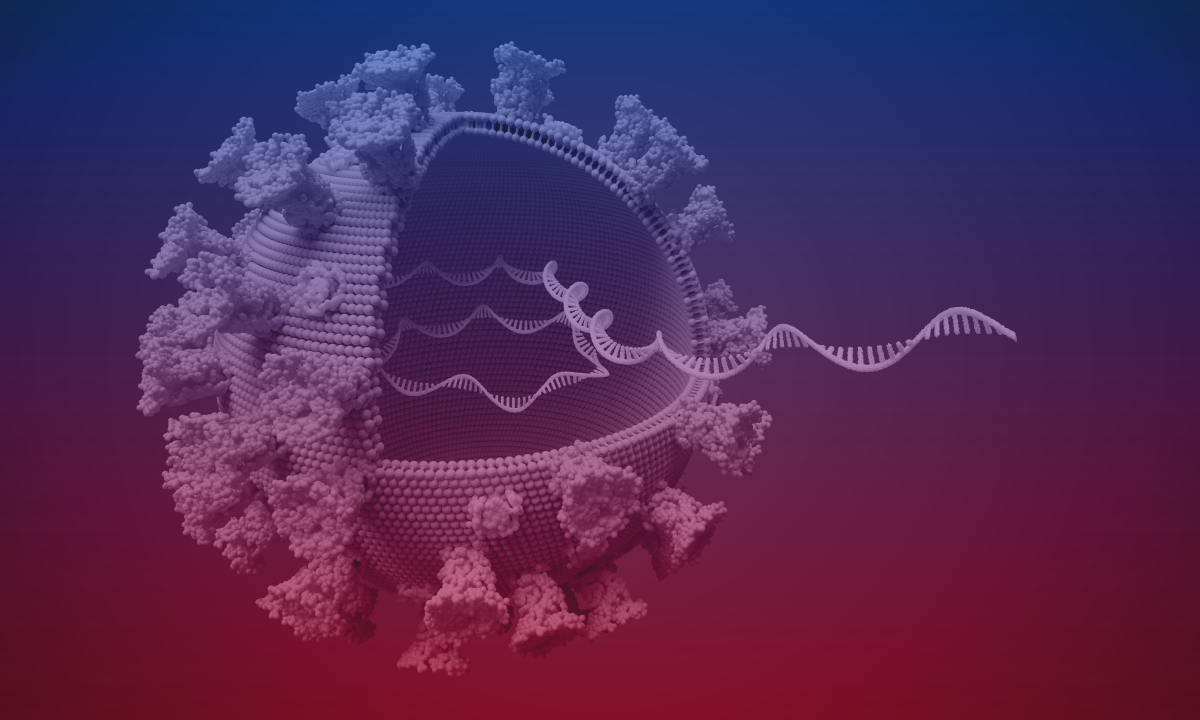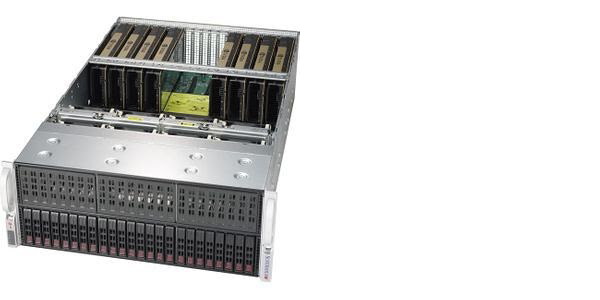What is Cryo-EM Research?
Cryo-electron microscopy (Cryo-EM) is a particular method used to examine the structure of molecules at an atomic scale. More specifically, Cryo-EM is a specialized process involving freezing specimens at cryogenic temperatures and then using electron microscopy to image those molecules.
The field of cryo-EM is rapidly evolving, especially with the development of Relion to accelerate the evolution of the science in the field. Over the course of nearly two decades, a number of reconstructions have been made of these macromolecular structures, revealing secondary structures not previously discovered. Most recently, it has been possible to create reconstructions at near-atomic resolution, which has been unheard of in cryo-EM to this point.
As electron microscope technology improves and image processing computational tools advance they have contributed immensely to the successful growth of cryo-EM research. The development of hardware, such as direct-electron detectors specializing in the direct reception of accelerated electrons, and phase-plates designed to cause a certain observable change in the accelerated electrons, are expected to rapidly improve cryo-EM research in the near future.
Cryo-EM allows for specimens to remain in their natural state without altering molecular structures via crystallisation or degrading the structures through other methods.
So, this brings up the question: what does Relion have to do with Cryo-EM research?
What Is Relion?
Relion visualized models, Image Source
Relion stands for “REgularised LIkelihood OptimisatioN”, and consists of software using an empirical Bayesian approach to particle analysis.
Relion played a critical role in being able to determine the atomic structure of particles and molecules at a “near-atomic” resolution. Since the induction of Relion in 2012, it has become the most popular software package worldwide to determine cryo-EM structures.
While Relion did come onto the cryo-EM research scene in 2012, so did direct electron detection cameras. Between the innovation of these two factors it is difficult to determine which had the greatest impact on the field of cryo-EM research. However, there is no doubt that Relion software, workstations and servers have become an integral part of the field today.
Theoretical Background for Cryo-EM Reconstruction & Implementation
Cryo-EM reconstructions are refined through a maximum a posteriori algorithm (MAP) refinement based on the following linear model in Fourier space:

Linear Model in Fourier Space
An article on Science Direct from Scheres, walks through the linear model and breaks down more of the mathematics for Cryo-EM reconstruction if you’re interested in learning more.
The application from this research and background has led to using Relion for Euler angle operations and appropriate 3D-EM standard conventions. Relion is a stand-alone program with a graphical interface to make it easier to use for even novice users.
In Relion, all metadata is transferred/received through plain text files in the STAR format. This format provides an easy way to store tables of label-value pairs that is similar to XML but easier to read by humans. The structured metadata input and output in Relion was designed to facilitate its implementation into packages providing its capabilities into many other programs.
Relion still requires large amounts of CPU depending on the task, and as a result, the program uses a hybrid parallelization scheme in two levels to reduce computation times.
The two levels of hybrid parallelization are:
- Distributed-memory parallelization - occurs through the message passing interface (MPI) to divide the data set into subsets of images that are processed in parallel. This is a work-on-demand implementation, meaning a master node sends small jobs to slave nodes that request work when they are idle. The processing of random halves of data for the gold-standard FSC calculations is also handled by MPI–meaning each half of the data is sent to a different subset of slave nodes.
- Shared-memory parallelization - occurs through POSIX threads that further divide the workload of the MPI nodes. Each thread processes a subset of all orientations for each individual image. The distinct advantage of using threads over MPI is that all threads can access the same computer memory, so that the total amount of memory in modern multi-core computing nodes may be used more efficiently. Taken together, the hybrid parallelization approach provides maximum flexibility: both in terms of scalability and memory usage.
Main Benefits of Using Relion for Cryo-EM Research
The Relion program has ultimately produced a refinement tool for Cryo-EM delivering state-of-the-art reconstructions at more than acceptable computational costs. The use of FSCs to estimate resolution-dependent SNRs helps you avoid overfitting and provides realistic resolution estimates.
It’s important to note that Relion employs a local optimization algorithm making the outcome of the approach dependent on the quality of the starting model. This is one of the reasons why developing robust starting models is now an active area of research.
Thanks to Relion (and many researchers!), there is now a useful tool and process to predict the accuracy of alignment of individual particles and their different frequencies. The careful tuning parameters ultimately removes the requirement of an expert user/researcher, further reducing the barriers of entry for Cryo-EM structure determination.
Looking for optimization information and hardware for Cryo-EM research with Relion? The following sections will help you better understand how you can get the best performance for your Cryo-EM project.
How to Optimize Cryo-EM Research With Relion
The beauty of Relion software being open-source is that it allows for a lot of flexibility for your cryo-EM research. However, there are a few things you can do to maximize your cryo-EM research with Relion.
Relion is only as powerful as you make it.
Using low-quality GPUs, limited RAM, and below-average MPI are ways that your research can fall flat on its face. Taking advantage of these few areas of improvement will go a long way in optimizing your cryo-EM research with Relion.
Here are a few ways you can improve your Cryo-EM research using Relion with some hardware improvements.
Use a High-Quality GPU
NVIDIA GeForce RTX 2080 Ti, Image Source
As the cryo-EM field of research advances, so do the number of data points. Every time there is an advancement in computing power, visual technology, or automation, there is a substantial increase in the scope and complexity of data points. Each advancement begins to outpace the limits of your hardware you are using.
To improve your cryo-EM research with Relion you should be investing in scaling your GPU with the advancing technology. Using Relion, you will be able to generate vast amounts of data points and you will want to represent those visually. Having a high-quality GPU to support your resource management, memory, and for addressing the visualization of all those complex data points is imperative.
It is worth noting that, when it comes to scaling your GPUs to meet the needs of your research, it is more effective to scale out by adding up to 3 extra GPUs (more than this becomes costly for reduced gains) than it is to scale up by simply upgrading a single GPU.
You can go with the newest GPUs on the market or shop around for older models. Currently, NVIDIA's GeForce RTX 30 Series of GPUs are the best available, but you can always look into older models like the above pictured RTX 2080 Ti which can save you a little bit of money.
Expand Your RAM
The creators of Relion recommend a minimum of 64GB or RAM for small image sizes, like 200x200. However, if you are looking for larger image sizes, then you are going to quickly run into problems if you are only using the minimum requirements.
To optimize your cryo-EM research with Relion you should look at 256GB of RAM or more as a realistic minimum for high-quality images. This will also help with fighting off insufficient memory issues, which could lead to fruitless labor with dead Relion jobs.
Adjust MPI
MPI stands for message passing interface and is the means of multiple computers running parallel programs and communicating across distributed memory. As you begin to scale out with GPUs to optimize your cryo-EM research with Relion, you will have more communication happening between the various GPU nodes.
MPI visualization of CPUs communication, Image Source
You can choose to focus the MPI within one main GPU or run multiple MPIs across multiple GPUs. However, it is recommended to focus on one MPI for each GPU to increase the use of memory and have good, stable performance across all GPUs.
Which Relion Workstation or Server is Best For Cryo-EM Research?
When you put all of this information together it becomes apparent that there are important decisions to make to improve your cryo-EM research with Relion. Your GPU is important, your memory is vital, and your MPI will prove critical.
So where does the hardware you need to run Relion come into play?
Looking for a workstation or server solution is an important step for cryo-EM research because you are more than likely going to have multiple users and workstations running Relion for gathering and visualizing data points. Having everything in one place, with everything you need, and plenty of space for expanding and swapping parts as needed is going to be pivotal to your success.
With this in mind, one excellent option to improve your cryo-EM research is with the following Relion server.
Dual AMD EPYC High-End Simulation Server
The Dual AMD EPYC High-End Simulation Server is the optimal choice for all your cryo-EM research needs. It will allow you to have plenty of space for adding, subtracting, and swapping all the GPUs, CPUs, and connectors you would ever need. It also has a great TPD (thermal design power) rating. This server solution can hold up to 4TB of memory, so you will most likely never have to worry about insufficient memory for your Relion jobs again.
Our favorite thing about this server solution? It runs on AMD EPYC processors, which we wrote about recently in another blog article. It is currently one of the best processors available today.
If you are wanting to improve your cryo-EM research with Relion servers, then this server is the best way to get started and maximize your time, energy, and net gains.
If you are a lone researcher or don't think you need something as big as a server to run your workloads, you can also look at a more compact, budget friendly Relion workstation. This will cost less than a server and still do a great job at getting the results you need.
Get More Helpful Insights in Other Articles
Do you have other questions about cryo-EM research, Relion, or workstations and servers? Let us know in the comments section below or feel free to contact us.
Check out the rest of the SabrePC blog for other articles.



